10 Traditions, meanings and symbolisms behind Greek Orthodox Easter in Cyprus
06 Apr 2021
As gorgeous spring time opens up across the globe, despite the pandemic, we are reminded of new beginnings, a chance at a new start and the start of a new season of happiness and hope. All of this is indeed what Easter symbolises, the rebirth of Christ, so something new, of better days to come. There has never been a time when we needed this promise more and so, at this special time of year, we wanted to explore the hidden meanings, expressions and traditions behind Easter symbols, games, food and events. Many of these you may see in other Mediterranean countries or beyond, but many some are more unique to our island or religion. Whatever religion or country you are from, many visitors are intrigued by this exciting time of year and all its age old ways.
1 - The Cross
By far the most important symbol of Easter and indeed the Christian relgion, the Cross is used at Easter time, usually made out of wood, to represent the Cross that Jesus was crucified on, where he died and then was buried in a tomb, only to resurrect three days later. The Cross is painting on eggs, worn around believers necks, used on icons, in church wall paintings and so much more.
2 - Bonfires on the Easter Saturday Night
Huge bonfires can be seen in many churchyards across the island, which symbolize the burning of Judas, who betrayed Jesus. You may also see fireworks commencing at midnight, the time commencing the special day of Easter Sunday which is called the ‘Anastasi’, celebrating the Christ's rising from death and being reborn.
3 - Candles
Although in modern times these are often decorated with personalized and fun touches, the real essence of these candles which were traditionally made from beeswax, is to be lit by the holy fire which arrives by plane from Jerusalem. The lit candles are then transported home and a cross is made using the flame at the threshold of the home. The fire, light and cross are all meant to bring the household luck for the coming year, a new beginning.
4 - Sayings
At midnight of Holy Saturday, turning to Easter Sunday, everyone would have gathered in the grounds of their local churches awaiting for the Holy light to emerge. At this point, the exchange of four words is heard throughout the night until the next day and beyone. 'Christos Anesti' (Christ has risen) is said first and responded to by 'Alithos Anesti' (indeed he has).
5 - Magiritsa Soup
A traditional soup eaten to break the fast, the ingredients include egg and lamb offal. Enjoying this soup is a family affair that takes place after midnight mass and can last until the early hours of the morning.
6 - Coloured Eggs
Bright, sparkling, decorated, coloured, wrapped, painted, dyed.... you name it, it's Easter! The reason? The Egg symbolises birth, and Christ was reborn. More importantly, eggs must be cracked open in order for new life to emerge, just as God opened Jesus' tomb for him to be reborn. Therefore, the egg itself symbolises Jesus' tomb and his rebirth.
Different countries use eggs in different ways, but in the Mediterranean we hard boil eggs and dye them, traditionally with red vegetable dye symbolizing the blood of Christ, but now manufactured dyes in a multitude of colours are available in most shops along with stickers and decoration. A game is played on Easter Sunday, whereby everyone choses an egg and two play against each other at any one time, tapping their eggs together and seeing which one breaks. Both the top and bottom of the eggs can be used in the game. The one who has one or both sides of their egg intact at the end is the winner. There are also clay, Styrofoam or toy eggs available for kids to decorate for those who want something longer lasting to keep.
7 - Bunny Rabbits
As it's also spring time, so the obvious time when the animal kingdom is blossoming with new life and what more so than bunny rabbits. Over time, bunny rabbits have been depicted holding baskets of eggs and are strongly associated with Easter, the highlight of springtime celebrations. An international symbol that is seen also all over Cyprus and decorating public roads, shops, hotels and homes.
8 - Tsoureki
This delicious three braided sweet bread is traditionally made on the Thursday of Holy Week to be eaten on Easter Sunday when the Lenten fast is broken. The bread contacts eggs, milk and butter which are not eaten during the Greek Orthodox 40 day fast. The three braids symbolize the Holy Trinity.
9 - Flaounes
A traditional Cypriot bread made with cheese that many look forward to enjoying over the Easter celebrations. Making these is often a family affair and recipes can vary from family to family. They are made usually on Good Friday and eaten on Easter Sunday and beyond.
10 - Slow Cooked Lamb
The lamb itself symbolised Jesus who was sacrificed to save all mankind for their sins. The lamb is cooked whole on the spit and many gather around for the long process enjoying traditional drinks like zivania and ouzo throughout the day. It is traditionally eaten at the end of the 40 days fasting period as a special treat on Easter Sunday.
Happy Easter and we hope to see you all soon.
Written by
Farah Shammas, Managing Director


